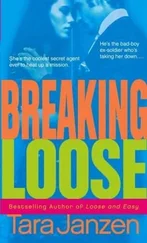The presence of narcotics as narrative subjects on television or in cinema is not exclusive to Breaking Bad , and neither are their referents to ‘right’ and ‘wrong,’ or ‘good’ and ‘bad.’ In 2005, Weeds popularized this conflicting dichotomy by offering Nancy Botwin, the self-entitled, newly-widowed housewife who peddles drugs throughout her fictional suburb. As for Breaking Bad , it seems Vince Gilligan made a calculated decision to employ methamphetamine as the drug of choice. Methamphetamine (MA) creates one of the first thematic connections to our anxiety over time. To illustrate, one could look at the short-term effects of meth usage, which becomes a means by which we can stretch time. As Gonzales, Mooney, and Rawson (2010) note, “The desirable short-term effects of MA, or the initial rush, are characterized by increased energy and alertness, and elevated positive mood state, and decreased appetite. […] Compared to other stimulants… the half-life of MA is quite long, ranging from 8 to 12 hours” (385-98). As a result, the short-term effects of meth serve to defy the established “clock time,” making it irrelevant and stretching any time at hand into energy-filled endeavors. Within Breaking Bad , the appearance of shotgun-toting, shovel-happy junkies might not advocate the use of meth to stretch what little time is at hand, but—in real life—it’s apparent that career addicts and criminals are not the only ones indulging in the substance. “Amphetamine-type substances are the second most widely abused drugs after cannabis,” state Maxwell and Rutkowski (2008) in their study of the prevalence of methamphetamine abuse (229). Furthermore, studies find that “Women are more likely to start using stimulants to lose weight,” battle depression, and methamphetamine use is growing in certain occupations (Maxwell and Rutkowski, 2008, 229) and students looking to achieve greater academic success with all-night cramming sessions (Gonzales, et al. 2010). If we discount the full-blown addicts, we can see an anxiety over time in the subsets of women, time-sensitive occupations, and students. Theoretically, women are attempting to lose weight in a shorter period of time to extend their aesthetic capital; the farther a truck driver travels in one sitting, the faster his or her load is delivered, and the sooner he can begin another run and earn more money; the student avoids sleep to absorb that much more information, ideally, to succeed on each test and accomplish as much as possible.
Something else of interest is Walt and Jesse’s method of producing methamphetamine. Admittedly, I have no knowledge or experience of the required procedure, but, in the show, Walt uses his chemical knowledge to circumvent the time typically required to manufacture meth. Therefore, his method also defies the average “clock time” required for production. In addition, the chemicals themselves often serve to erase moments in time for both Walt and Jesse. This is most apparent when they use barrels of hydrofluoric acid (an ingredient in meth production) to dissolve certain deceased individuals: Krazy-8, Emilio, Victor, the super lab itself, Mike, and a young boy. [2] The episodes in which dead bodies are dissolved include “…And the Bag’s in the River” (2/10/08), “Box Cutter” (7/17/11), “Face Off” (10/9/11), “Dead Freight” (8/12/12), and “Gliding Over All” (9/2/12).
Furthermore, Gilligan’s decision to use methamphetamine is possibly related to its spread throughout the country. As methamphetamine has gained in popularity, it has gone from a “small local problem and spread exponentially from west to east over a twenty-year span” (Gonzales, et al. 2010, 388). And, while “The indicators show that the problem is greatest in the western parts of the countries,” it is “moving eastward.” The importance here—for our perspective—is that the progression of meth is a way for Gilligan to break down the typical East-to-West progression that founded this country. In other words, the introduction of methamphetamine, its nefarious connotations, and the algorithm that it marries with modern capitalism creates an imagery of time doubling back on itself, effectively erasing the initial progression from East to West, instead creating a chaotic devolution that makes the time spent on the initial expansion a zero-sum game.
The starting point of this reverse progression is also worth noting. Set in Albuquerque, the series exists in a location that, with the exception of August, experiences very little precipitation and has 330 days of sunshine a year. Here, the weather’s constancy creates a variety of symbolism. First, the series has been shot as if it were perpetually daytime. Nebulous clouds flit across the sky in time-lapse photography, but the sun hardly sets. If it does, the darkness is momentary, illuminated by the lights of buildings or the desert-bound RV/meth lab. This constancy fosters a perpetual present, undifferentiated from the day before or the day after.
Furthermore, the setting limns an economic corollary on the convoluted algorithm that is modern capitalism, in which “people sense that the time available to them is inadequate for their existence” reminding us that “time equals money” (Moshe 2012, 69). A prime example of this is illustrated in the time-oriented episode “4 Days Out” (5/3/2009). Jesse and Walt travel into the desert to cook meth over a weekend; together, they work against the clock, defying natural time in order to cook the product and earn large stacks of cash. In our own universe, we see this exhibited in office buildings that stay open beyond sundown, but the same post-sundown work ethic is further exemplified by the meth super lab that we’re introduced to in season three. This windowless, Vegas-casino-like workspace eliminates both day and night. Fluorescent bulbs replace the sun, but create visibility twenty-four hours a day. In the lab, Walt and Jesse concoct their batches focusing on production and the amount they can produce before they leave the lab. Lab time revolves around the temporal anxiety of producing a specific amount of meth within a prescribed time schedule. For Jesse, Walter, and their boss, Gus, time and economics are linked and translate into the efficacy of production and return on investment. At the same time, for Walt, the anxiety over time spent on production also correlates, initially, to the time that he has left.
In the pilot, Walt learns that he has cancer, a diagnosis that sends his thoughts in a variety of directions, but mostly toward his time remaining . Walt’s recognition of his own mortality impels a number of different actions, but the first is to provide security for his family. As the viewer, we meet a character cognizant of the end of his life. In these moments, Walt embodies what Delueze refers to as “the death instinct,” when time is “empty and out of joint” (111). This death instinct rearranges Walt’s view on time, transitioning his present into the imminent future. Each moment of his present becomes his past as he inches closer and closer to death. In Being in Time (1927), Heiddeger notes “The event of death, which is the possibility of radical nonexistence, is futural, not in the sense of being ‘not yet’ in time but as something ever present yet seemingly coming from nowhere” (Heidegger, qtd. in Widder 2008, 166). If we look at Walt through this lens, we see inevitable death lingering within his present. At the same time, his knowledge of his death also impels him to reflect on the past, which, if Deleuze is correct, “no longer exists, it does not exist, but it insists, it consists, it is . It insists with the former present, it consists with the new or present present” (82). Simply put, Walt’s past brings him to his present, but his present does not elide the past; rather, his past—or his just past—influences the decisions he will make, thereby influencing his future (Gallagher 1998).
Читать дальше












